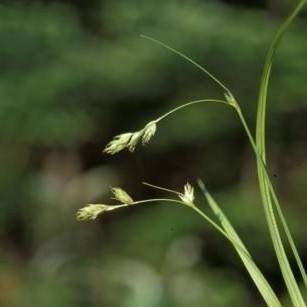
Short Scale Sedge
Carex deweyana
Also Known As - Dewey's SedgeWatering:
Average
Hardiness Zone:
Sun:
full sun,part sun/part shade
Leaf:
Yes
Growth Rate:
Low
Drought Tolerant:
Yes
Salt Tolerant:
Yes
Care Level:
Medium
watering
Bent Northern Sedge should be watered once or twice a week, depending on the conditions in the particular environment. In general, it should be watered deeply, but not enough to cause standing water. In hot weather, it may require more frequent watering; during cooler temperatures, the plant needs less water. Ensure the soil stays moist but not waterlogged. It is important to water the plant soon after planting – during the establishment period – to help stimulate root growth.
sunlight
Bent Northern Sedge (Carex deflexa var. deflexa) grows best in moist, sunny sites with partial to full sun. This species thrives in areas that receive at least 6 hours of direct sunlight each day, preferably early in the morning. When grown in full sun, the plants will grow taller and fuller than when grown in partial sun.
pruning
Bent Northern Sedge plants should be pruned in the late winter or early spring. Prune off any dead or damaged foliage with pruning shears or a sharp knife. If the plant is in need of further shape or size maintenance, then selectively prune back shoots to the desired size and shape. Pruning too early may result in the loss of flowers. Pruning should be done selectively, so that the overall shape of the plant is preserved. Take care not to damage the terminal bud and too many side shoots, as this will limit the options for pruning in the subsequent season.
